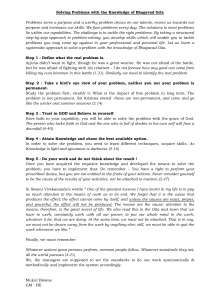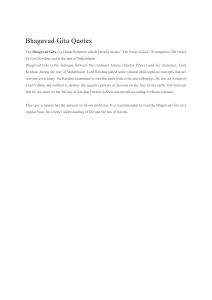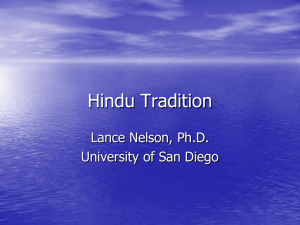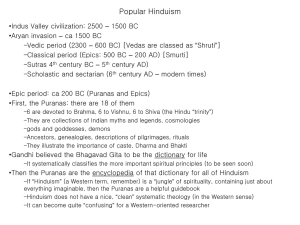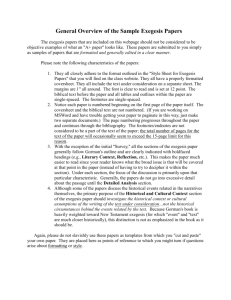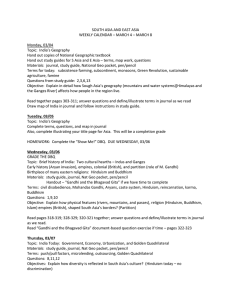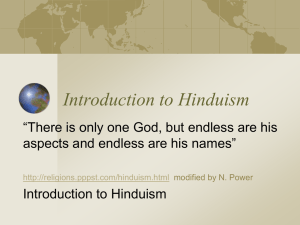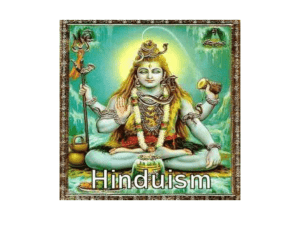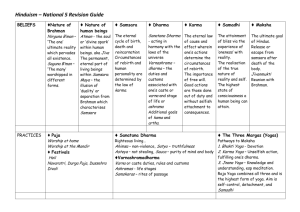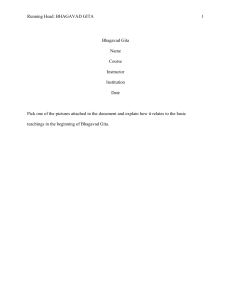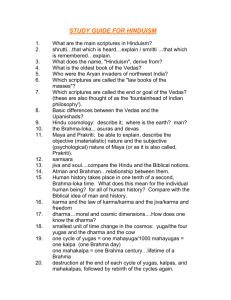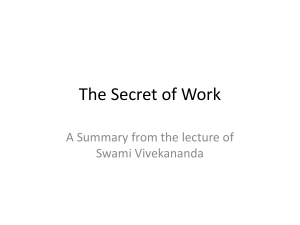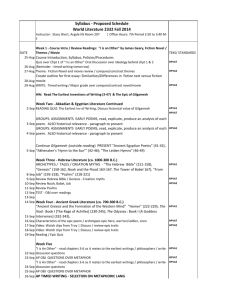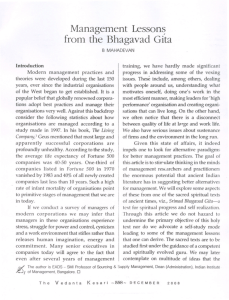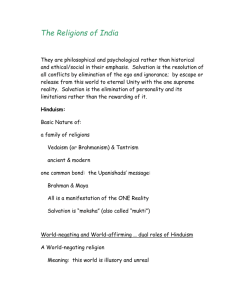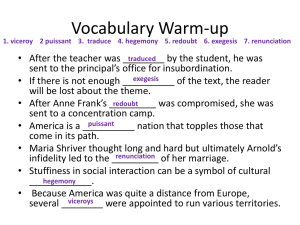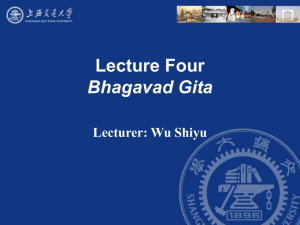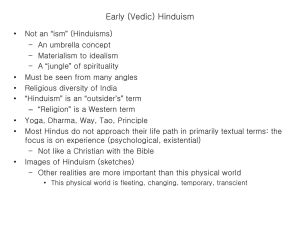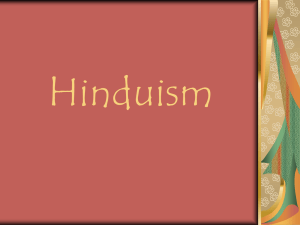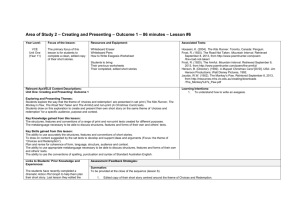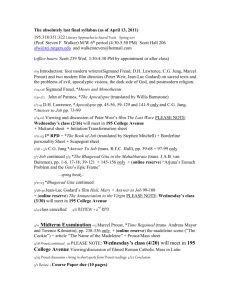Study Guide: Test 2, Hinduism
advertisement
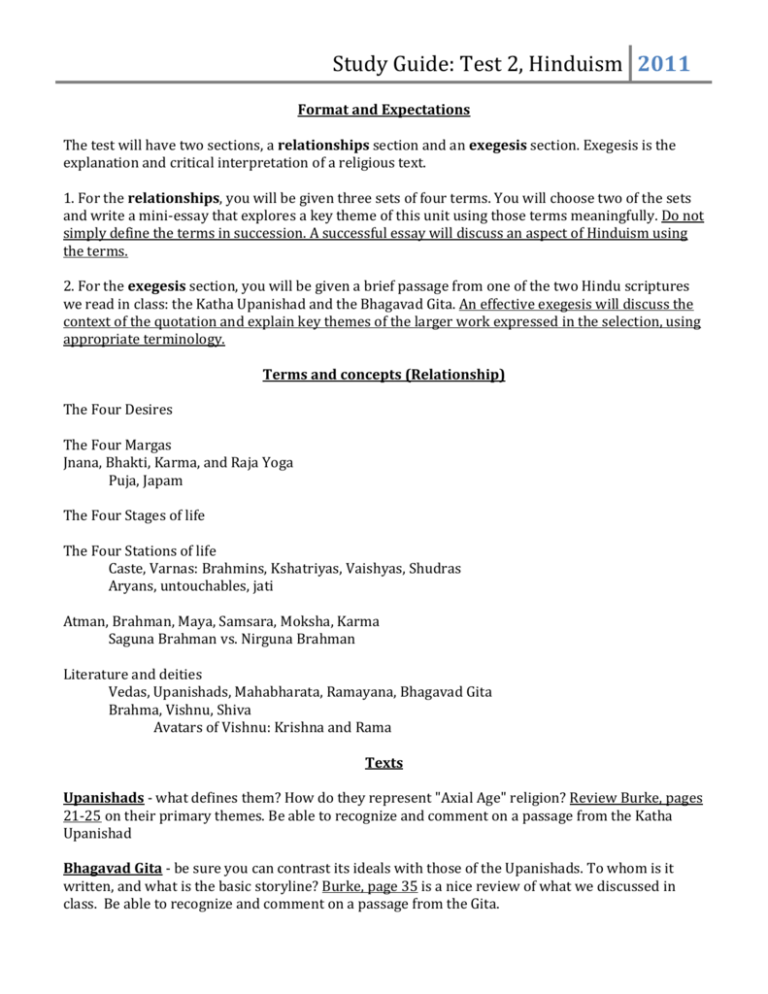
Study Guide: Test 2, Hinduism 2011 Format and Expectations The test will have two sections, a relationships section and an exegesis section. Exegesis is the explanation and critical interpretation of a religious text. 1. For the relationships, you will be given three sets of four terms. You will choose two of the sets and write a mini-essay that explores a key theme of this unit using those terms meaningfully. Do not simply define the terms in succession. A successful essay will discuss an aspect of Hinduism using the terms. 2. For the exegesis section, you will be given a brief passage from one of the two Hindu scriptures we read in class: the Katha Upanishad and the Bhagavad Gita. An effective exegesis will discuss the context of the quotation and explain key themes of the larger work expressed in the selection, using appropriate terminology. Terms and concepts (Relationship) The Four Desires The Four Margas Jnana, Bhakti, Karma, and Raja Yoga Puja, Japam The Four Stages of life The Four Stations of life Caste, Varnas: Brahmins, Kshatriyas, Vaishyas, Shudras Aryans, untouchables, jati Atman, Brahman, Maya, Samsara, Moksha, Karma Saguna Brahman vs. Nirguna Brahman Literature and deities Vedas, Upanishads, Mahabharata, Ramayana, Bhagavad Gita Brahma, Vishnu, Shiva Avatars of Vishnu: Krishna and Rama Texts Upanishads - what defines them? How do they represent "Axial Age" religion? Review Burke, pages 21-25 on their primary themes. Be able to recognize and comment on a passage from the Katha Upanishad Bhagavad Gita - be sure you can contrast its ideals with those of the Upanishads. To whom is it written, and what is the basic storyline? Burke, page 35 is a nice review of what we discussed in class. Be able to recognize and comment on a passage from the Gita.
